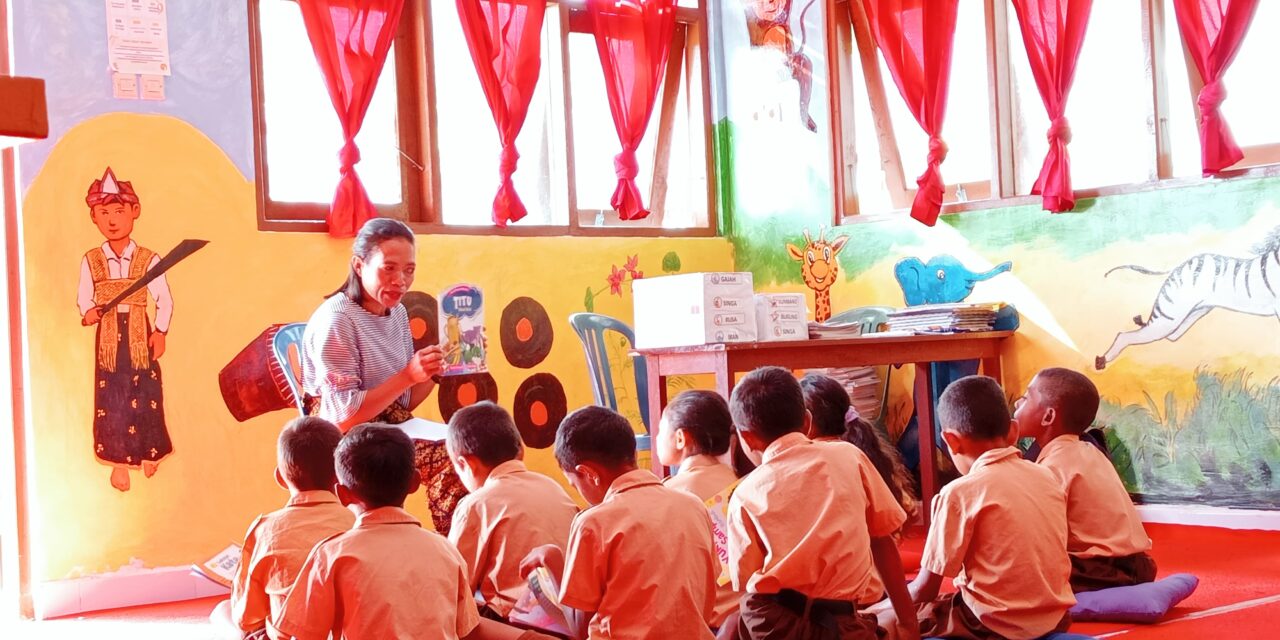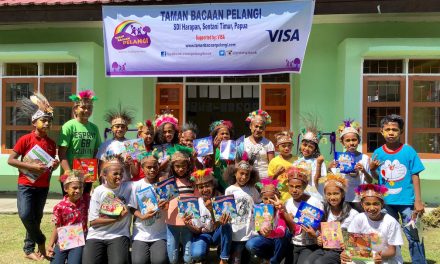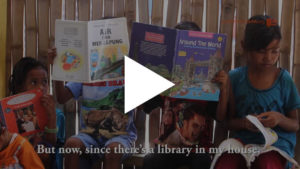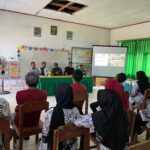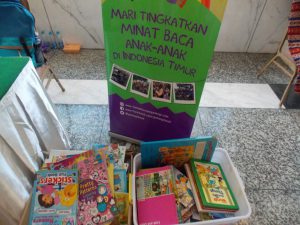Today the weather is quite bright, with a gentle breeze as the TBP team engages in light conversation with the teachers in the living room of SDN Aegela. The TBP team will provide a simulation of reading activities for the teachers’ library visit hours. There will be simulations of reading aloud, shared reading, paired reading, and independent reading. The goal is to practice the steps and processes of reading activities for the teachers. To make it more realistic, the reading activities are done together with the students, allowing the teachers to be exposed with the real situation.
The TBP team is ready to conduct a simulation of reading aloud, together with grade 2 students. After the introduction and informing them about the agenda, a book to be read aloud is presented, and their eyes are immediately drawn to the cover shown. Some hands start to rise, mentioning the pictures seen and answering the questions posed. Still in the warm-up phase, only a few children participate.
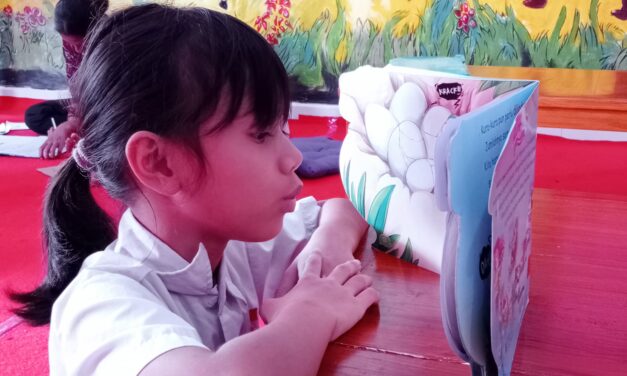
“One day, Rainbow Queen received a letter from Wind Princess. Surprise! Wind Princess will come to the Rainbow Palace.” – Anna and Rainbow Broom –
The story is being read by the TBP team. Some children appear to form the word “wow” with their mouths, ears attentively listening to every sentence spoken in the story, and eyes sparkling in admiration of the pictures in the book pages, occasionally blinking. Their heads follow the movement of the book directed left and right as the TBP team shows page by page of the book being read. Their eyes never leave each page shown until the story is finished being read.
After the story is read, it’s time to ask questions about the story that has been read. One by one, their fingers are raised, and their eyes seem to say, ‘Teacher… Teacher… I want to answer, Teacher! Me!’. With confidence, they answer question after question posed. The atmosphere becomes lively with the excited voices of the children discussing the story of Anna and Rainbow Broom.
“Alright, there were interesting sounds and movements in the story, let’s imitate them together! First, let’s imitate when Anna is about to catch Rainbow Broom, like this, Hop! Hiya! Hiya! With hands moving as if throwing a rope…” Their enthusiasm grows, and they put all their effort into imitating ‘Hop! Hiya! Hiya!’ loudly. They seem enthusiastic throughout the loud reading activity until it concludes. The atmosphere throughout the activity is adorned with admiration, blossoming smiles, and the low murmur of the students.
When it’s the turn of the grade 2 homeroom teacher to read aloud the following week, the children are also seen enthusiastic and paying attention to the story. Grade 2 students and their homeroom teacher rejoice and get absorbed in the story of twin siblings adventuring to find fish, Byuuurr! Byaaarrr!. Some students, when asked about their feelings during loud reading, express happiness and joy. They are happy because the story is good, and the way the story is read also makes them happy. Combined with various expressions and movements during reading, students become more eager to listen.
Elviana Vivian Lede, one of the second-grade students who now enjoys reading books, admits she feels happy when the teacher reads stories with a cool and confident voice. One time, Evi, as she is affectionately called, tried reading a story to her younger sibling. “I gave my little sister that book, and I started reading ‘Ciluuuk baaa! This is a Panda!’, then my sister laughed, Ma’am,” Evi jokes when recounting her experience of reading a story to her sister.
“Why did your sister laugh, Evi?” asks the TBP team. “Because my sister found it funny, Ma’am, that’s how I read it,” Evi explains again. Similar to Evi, Quela also enjoys reading at home, especially being able to read storybooks to Grandpa and Grandma in her spare time. Usually, Quela will read, and then Grandpa and Grandma will listen. Quela’s way of delivering the story is already good, accompanied by intonation and expression.
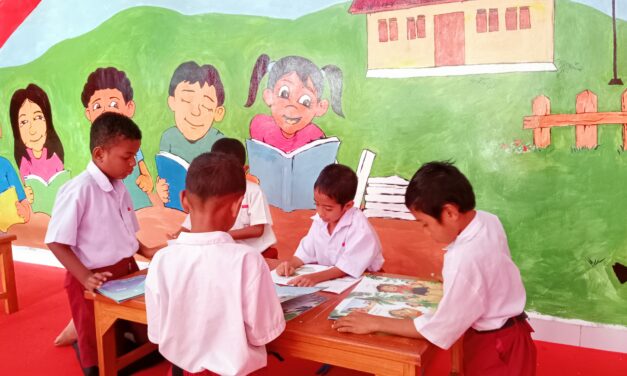
In addition to Evi and Quela, Ardus, who has a talent for fixing things taught by his father, also feels happy when someone reads a story. “The teacher reads the story with a smile and laughs, and I also feel happy,” he expresses. The most enjoyable and exciting part of loud reading for Ardus is when they together imitate interesting sounds and actions after the story is read. This is because various cool and enjoyable sounds can be imitated together with other friends, making the activity even more exciting.
Reading aloud activities are indeed enjoyable; students and teachers can be happy and have fun through the stories read aloud. Moreover, after reading stories aloud, students still remember some of the stories that the teacher has read to them. They even compete to share stories about books that have been read to them.
![Taman Bacaan Pelangi [Rainbow Reading Gardens]](/wp-content/uploads/2016/07/logo_taman_bacaan_pelangi_rainbow_reading_gardens_bilingual_d.png)
